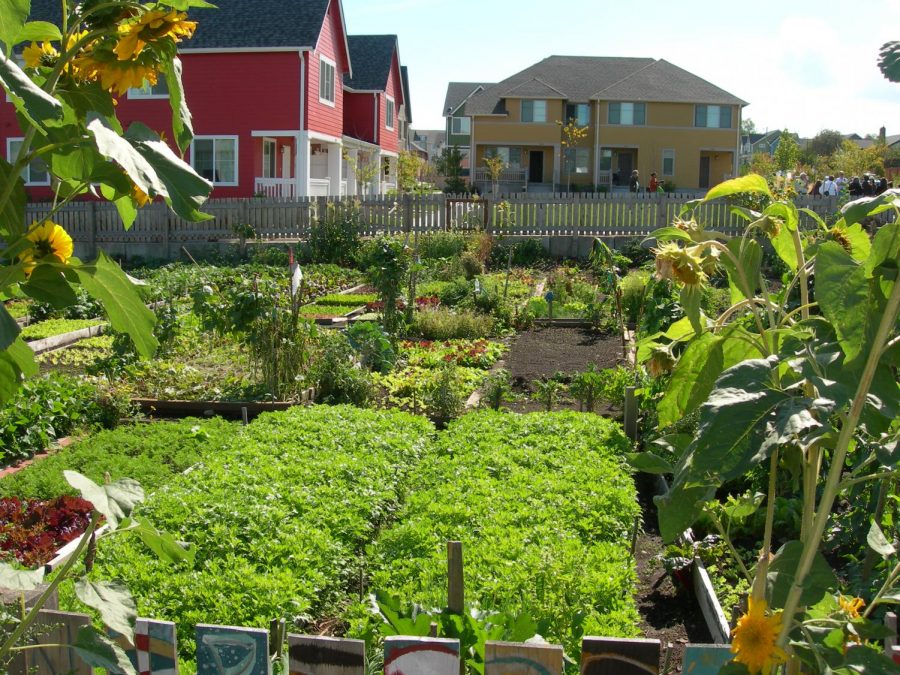How To Grow A Neighborhood
More people have been moving into agrihoods since the early 2000’s.
Almost ten years after the idea was proposed, the Santa Clara City Council finally approved the development of the Agrihood project. This project seeks to expand on the growing theory that situating senior homes near agriculture helps senior citizens feel more motivated to perform activities.
Agrihoods are organized communities that incorporate agriculture into a residential neighborhood. The purpose of these communities is to make food processing easier, while providing recreational activities for the residents of the communities.
In Santa Clara the Agrihood Project is all set to be constructed. In a six acre piece of land, residents of about 361 homes will make up a small portion of the urban city. The buildings in the Agrihood will have a similar structure to the rest of the city. The area will include a plaza,for a farmer’s market, a community center with a kitchen and some exhibitions, and also a workshop for a rain recapture tank. The residential area will be divided into townhouses, mixed income apartments, and affordable senior and senior veteran homes. Out of the 361 homes, 181 of them will be below the market rate. Additionally, 160 homes will be set aside for low income seniors. There will also be a farm that covers about 1.7 acres of the plot, along open space for community retail. The buildings will be situated around large, open courtyards.
These communities can be in rural, suburban, and even urban places. According to Neighborhoods, America’s first sustainable urban Agrihood was created by the Michigan Urban Farming Initiative in Detroit. In 2012, it established a two acre farm, two fruit orchards, and a children’s sensory garden. In an article by National Geographic, research showed that these communities are very appealing to homeowners because they urge them to meet new people through farming. Also, the lots are larger than normal residential homes and communal living is encouraged. The Agrihoods not only have a connection to food and nature, but also to the increase in human interaction.
The Agrihoods are set up so that there is a membership fee instead of rent. The crops are equally divided among the residents, and rely on the spring and fall harvesting. In this process, non-farmers become familiarized with how farmers harvest and take care of their crops. Overall, residents of Agrihoods claim that it offers both emotional and practical benefits like health, wellness, and local food production.
The Agrihood has a partnership with the real estate firm, The Core Companies, the non-profit organization, California Native Garden Foundation, and the city of Santa Clara. According to San Jose Inside, this project is also in a partnership with local business owner and activist, Kirk Vartan. According to Vartan, the Agrihood is being made for people to settle down in a peaceful environment. “We wanted to make a vibrant place. Somewhere where people can engage. A place to go for people to unwind, meander, walk, and be human.” Over a decade ago, the six acres of land were owned by the University of California for agricultural research.
In 2005, Santa Clara bought the land from them for private single family homes, and below market senior homes. This did not work because people protested to preserve the farmland. Vartan had led that protest, and said that “We wanted to keep the land public.”
In 2012, when the housing rates drastically changed, Vartan used over $100,000 of his own money and proposed an idea that would combine both residential area and agriculture. Vartan said “I wanted to empower the community to create a vision for this site that represented the agricultural roots of this area. I knew this city wasn’t going to spend any funds to explore this so I funded it.” Vartan created a prototype of his vision, the Win – 6, on Interstate 280. The Core Companies then picked it up. This attracted a lot of attention to the growing trend of Agrihoods. Soon enough the Santa Clara Council members started discussing ways to begin the Agrihood project. The plan finally made it through in January of 2019, and will start by the summer of 2020. The Agrihood Project may be the new way of living and conserving our natural resources in a few years.











